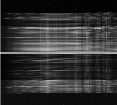 |
Hectospec
Reduction Tasks
|

|
![[TDC Home]](/images/tdc-home.gif)
![[TDC Search]](/images/tdc-search.gif)
![[OIR Home]](/images/oir-home.gif)
|
[Definitions] [Preparation] [Observation] [Reduction (Pipeline) (Software)] [Distribution] [Archiving]
 |
Hectospec
Reduction Tasks
|

|
![[TDC Home]](/images/tdc-home.gif)
![[TDC Search]](/images/tdc-search.gif)
![[OIR Home]](/images/oir-home.gif)
|
[Definitions] [Preparation] [Observation] [Reduction (Pipeline) (Software)] [Distribution] [Archiving]
hectospec.hsmapfix objects.map runs an awk script on map files to shrink the length of lines file so that they fit in a header keyword value string.